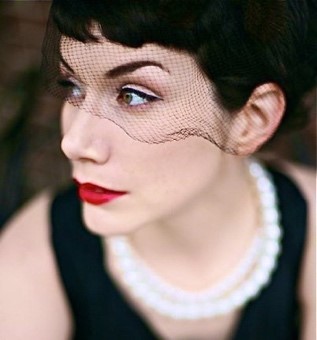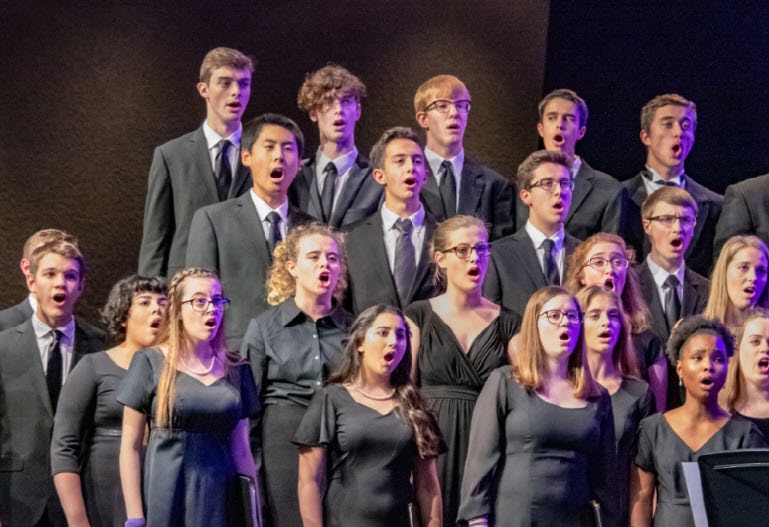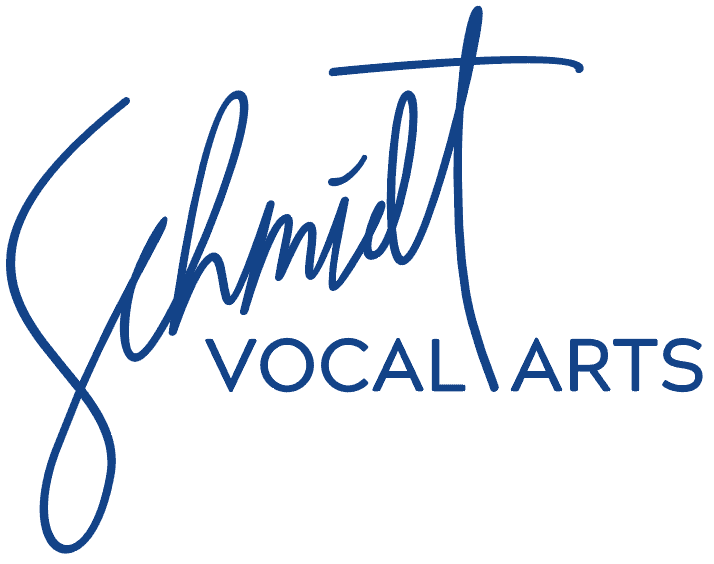/ News Posts / Artistry in Art Song
Artistry in Art Song
A Seven-Step Process
By NAfME Member Liza Forrester Kelly
This is sponsored by Schmidt Vocal Arts, sponsor of the 2019 Tri-M® Music Honor Society Chapter of the Year Award.
What should have priority for vocalists: technique or artistry? Neither! (Sorry, trick question.) Technique and artistry share equal importance and should be developed in tandem. High school vocalists as well as undergraduates pursuing music degrees, however, often struggle with balancing these two complex facets of their instrument. Young singers may feel they have to reach a high level of technical proficiency before their instrument can communicate artistic choices; fear their artistic choices may not be valid; do not have a clear idea on how to make artistic choices; or do not have a clear idea on how to communicate their artistic choices.
In an academic setting, voice teachers and choir directors alike, struggle to find time to address the foundations of vocal technique, foreign language diction, adherence to the elements of musicianship, and artistry within the limited time they have to interact with students each week. To help address the development of artistry in high school and undergraduate vocalists, teachers can follow a simple seven-step process to help students explore and experiment with finding and communicating artistic choices.
These seven steps are as follows:
- Creating a literal translation
- Researching the poet and composer
- Finding the form
- Interpreting the text and music score
- Establishing the performance persona and its subtext
- Establishing the inner universe
- Responding to the inner universe
For young singers, art song provides a logical application for this process, specifically, because:
- the majority of the repertoire sung by young vocalists comes from this genre
- art song offers a blank slate for making artistic choices since many elements such as character choice, when or how the character moves, plot, subtext, and time has not been pre-determined as they have for repertoire from operas, operettas, and musical theater
- the genre is sung in an intimate setting and allows for a wider range of vocal and physical nuance
For teachers working with groups of students this clear, concise process can also be applied to a wide variety of genres and repertoire to help young vocalists develop artistry and strengthen their connections to the text.
For this blog, I’m going to focus on the first two steps of the process. These steps are important to complete before a piano is touched, a note is sung, or diction has been given attention. These beginning steps establish a foundation of information and ownership over a piece of music that will be important in enabling young vocalists to create and communicate artistic choices.
STEP 1: Creating a word for word literal translation
It is extremely important that you write a word-for-word literal translation in the music score underneath the foreign language text. (I know there isn’t a lot of room underneath the text most of the time, but we need to find a way to squeeze it in anyway.)
WHY REASON #1: Often we sing in a language that is not native or fluent for us. If we are to communicate effectively to the audience in performance, we must understand the meaning of the text on many levels. The first and most important level is the literal translation.
WHY REASON #2: The literal translation acts as a bridge to help students intimately understand how the rhythm, melody, and harmony of a song is connected to the foreign language. In addition, when students begin working on the diction of the song, foreign words no longer function as nonsense phonemes but will have immediate context in their native language. This bridge is especially helpful in expediting memorization.
WHY REASON #3: When students invest time in learning what each word means their understanding of a language grows. In addition, students begin to take ownership of the song by investing their personal time and effort into the endeavor.
HOW: Students can work alone or in a group with the language dictionary or (if you must) utilize a translation website like Google Translate to create a word-for-word translation. Avoid using the poetic translation offered under the foreign language in some of your scores as well as translations from art song websites. Yes, these sites can be useful, and many have good translations. However, someone else has spent the time to translate the text and put it in an order where the grammar makes sense. Essentially, it would be like cheating on homework or an assessment if a student were to copy someone else’s translation work.
STEP 2: Researching the poet and composer
It is important to research the poet and composer who have provided the music and texts that students will be performing! More so, research will provide students with biographical and historical context that will be evident in both the text and music score. The more that young vocalists understand the writer and composer and how their world influenced them, the more the text and music score will begin to speak to them beyond what is printed on paper. This information will be important in helping you create separate artistic interpretations of the text and music. The interpretation of the text and music score will then become part of the roadmap for students’ vocal and physical artistry.
WHY REASON #1: Evidence of history is written in our texts and scores. Composers of music and texts cannot help but infuse their works with evidence of their own life experiences but also experiences from the larger socio-political world in which they lived. There is a lot of content underneath the surface of texts and scores, beyond the black and white of rhythm, melody, language, and score markings. This submerged content, “What lies beneath,” and what you discover as you investigate the poet and composer will give you clues on the choices you can make to interpret the text and music.
WHY REASON #2: Continued ownership of the song. While this type of research provides valuable academic information, a different type of value also lies in the fact that students have invested in finding this information. This type of ownership does not happen when someone else gives them the information and tells them to learn it.
HOW: Encourage students to be infinitely curious investigators! I have provided an initial set of questions for you to share with students to help them investigate. Have students start with the provided questions, but then challenge them to begin to ask their own questions, be curious, and not take information for granted. If in pursuit of an answer students run into references of specific people, places, items, and events, encourage them to “go down the rabbit hole” and find further clarification. Go beyond the minimum amount of information needed. Look up images, follow links, and investigate leads.
As mentioned before, when students begin their relationship with an art song with these first two steps, they enable themselves to begin owning the process and the research information. This in turn helps them connect to the text and the music beyond what is printed in the score and provides a strong foundation to support artistic choices to explore in performance.
Artistry in Art Song—Researching the Poet and Composer
Composer
- What are the composer’s dates?
- In what music history era was the composer active?
- What are compositional style points for the composer or their historical era?
- What are interesting biographical/historical events that might affect the composer’s compositional style?
- In what year was this song composed?
- Is this song part of a song cycle? If the answer is yes, is this larger work significant for some reason?
- Is additional information gathered by simply searching the song title/composer? (Google it!)
- What does this composer look like? Find a drawing, painting, or photograph. Find images of other people, places, events, or items referenced in your research.
- Define additional words found in your research that are not clear (e.g., if it’s stated that the composer was a pacifist and you do not fully understand what it means to be a pacifist, you should investigate or further define the word).
Poet/Author
- What are poet’s/author’s dates?
- In what era of literary history era was the poet/author active?
- What are compositional style points noted for the poet/author or their historical era?
- What are interesting biographical/historical events that might affect the poet’s/author’s writing style or output?
- In what year was this text published?
- Is this poem or text part of a larger literary work? Is this work significant for some reason?
- Is additional information gathered by simply searching the title of poem/text/prose and the poet/author? (Google it!)
- What does this poet/author look like? Find a drawing, painting, or photograph. Find images of other people, places, events, or items referenced in your research.
- Define additional words found in your research that are not clear.
About Schmidt Vocal Arts and the author:
Schmidt Vocal Arts is dedicated to encouraging young singers to pursue their passion for classical singing and the vocal arts through scholarships and vocal programs for high school singers. NAfME member Dr. Liza Forrester Kelly is an active performing artist, stage director, and music educator—and a longstanding member of the Schmidt Vocal Artists Network. She is a resident faculty member at the Schmidt Vocal Institute where she teaches connection to text and stage movement classes in addition to directing the institute’s final performance. She also adjudicates at select Schmidt Vocal Competition locations each year. Liza is an associate professor of music and director of opera theater at Western Kentucky University. She is currently writing a handbook for young vocalists titled Artistry in Art Song. Learn more at www.schmidtvocalarts.org.
is dedicated to encouraging young singers to pursue their passion for classical singing and the vocal arts through scholarships and vocal programs for high school singers. NAfME member Dr. Liza Forrester Kelly is an active performing artist, stage director, and music educator—and a longstanding member of the Schmidt Vocal Artists Network. She is a resident faculty member at the Schmidt Vocal Institute where she teaches connection to text and stage movement classes in addition to directing the institute’s final performance. She also adjudicates at select Schmidt Vocal Competition locations each year. Liza is an associate professor of music and director of opera theater at Western Kentucky University. She is currently writing a handbook for young vocalists titled Artistry in Art Song. Learn more at www.schmidtvocalarts.org.
Interested in reprinting this article? Please review the reprint guidelines.
The National Association for Music Education (NAfME) provides a number of forums for the sharing of information and opinion, including blogs and postings on our website, articles and columns in our magazines and journals, and postings to our Amplify member portal. Unless specifically noted, the views expressed in these media do not necessarily represent the policy or views of the Association, its officers, or its employees.
Catherina Hurlburt, Marketing Communications Manager. October 28, 2019. © National Association for Music Education (NAfME.org)
Published Date
October 28, 2019
Category
- Repertoire
Copyright
October 28, 2019. © National Association for Music Education (NAfME.org)









